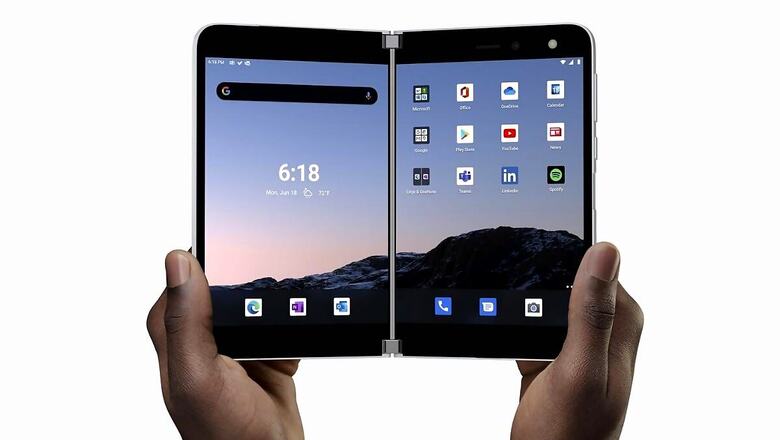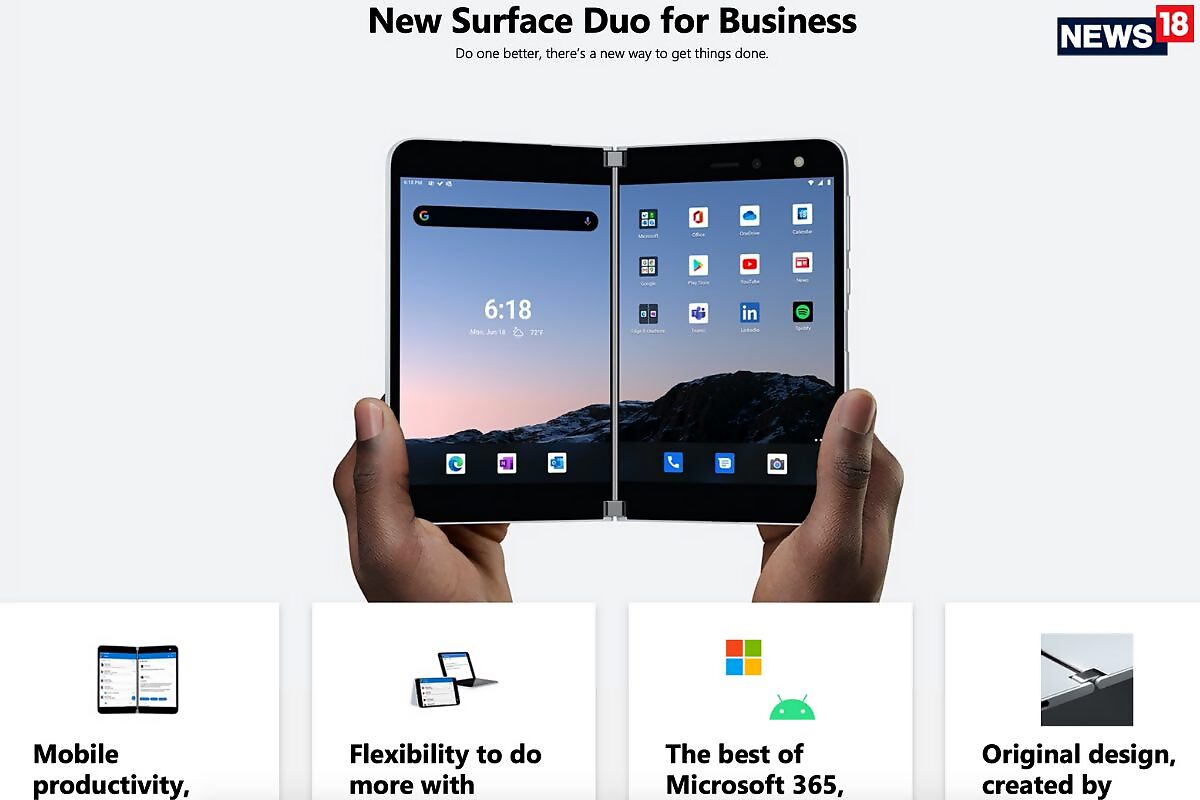
views
Microsoft has finally launched the Surface Duo. It was first teased last year, and almost an year later, it has finally been released. Well, it has now gone live for pre-orders in the US at least, for $1,399. Amidst all the congratulatory tweets that Microsoft and Google have been sending each other’s way since late last light and the general sense of excitement on social media (well, Twitter does get excited about stuff rather quickly), you might still be wondering what the Microsoft Surface Duo is really meant to do. And who it is really for. Particularly at that price. Interestingly enough, if we are to look at the spec sheet, it seems the Surface Duo has arrived one year too late. And well, foldable phones were very cool last year. New. Unique. Rare. Aspirational. Not so much now. Samsung has done a great job making them as mainstream as possible with two different form factors—the Samsung Galaxy Fold, the Samsung Galaxy Z Flip and now the upcoming Samsung Galaxy Z Fold2.
Let us look at the Microsoft Surface Duo’s spec sheet. There are two separate 5.6-inch OLED displays (1830 x 1350 resolution) brought together by a physical hinge to make a sort of a 8.1-inch overall usable space for your work and more. This is a 360-degree hinge which makes one display go all the way back if that is what you want. Something that convertible laptops have done for years, except this is smaller. And pocketable. The displays are expected to work together in a more connected dual-screen experience for your apps, unlike LG’s very shoddy implementation with its G8X ThinQ Dual Screen. In both respects, the Samsung Galaxy Fold and of course the Samsung Galaxy Z Fold2 offer a slicker experience, also thanks to the technologically more complicated implementation of a foldable screen. Don’t forget, the Galaxy Fold has a second smaller yet fully usable screen on the outside as well, which means you don’t have to unfold the phone all the time to check notifications and more. That is set to become even more immersive with the Galaxy Z Fold2.
See where I’m going with this? Unfortunately, I’m not done yet.
The Surface Duo is powered by the Qualcomm Snapdragon 855 processor, paired with 6GB RAM and the 128GB or 256GB storage options. I never judge a phone based on the processor, but I fear a lot of potential buyers looking to put down a lot of money for the Surface Duo might begin to wonder why this is so. After all, the Snapdragon 855, for all its might, has been around for a while now. And make no mistake, no Android flagship smartphone will want to be seen with one now. There is also no 5G on the Microsoft Surface Duo. The Microsoft Surface Duo also gets dual batteries which total up to 3577mAh in capacity. That is considerably lesser than the 4380mAh on the original Galaxy Fold. We can only hope Microsoft has done enough under-the-hood to seriously up the game in terms of frugal battery consumption. On the spec sheet also, the Galaxy Fold offered more last year—12GB RAM and 512GB storage.
Then there is the single 11-megapixel camera on the Surface Duo that is your primary camera when you need to take photos of beautiful things around you. And it also doubles up as the video call camera when it is time to get some work done on a Zoom (oops, Microsoft Team) call with colleagues. Well, Microsoft does say it is optimised with AI, which would perhaps make everything better. Or would it? In comparison, the last year’s Samsung Galaxy Fold offered a Hexa camera setup, which meant no matter what the orientation or position, you will have a camera available for video calls or photography. The Galaxy Z Fold2 takes the photography capabilities even further, including a triple camera system at the back.

Ah, but the software, you will say. Microsoft must have done wonders to make Android work like magic on this dual screen phone.
Microsoft says “Any app has to run”. Hang on! On its part, Microsoft has updated Word, Excel and PowerPoint, for instance, to span the width of the two displays. So too for OneDrive. Amazon Kindle app will feel like you are flipping the pages of a book—mind you, this is the promise we have been hearing since the first Kindle was born. Smartly enough, Microsoft has made tweaks that would understand how you are using the displays. For instance, if you click on an email attachment, it’ll open on a second screen if that is free.
In my experience with the Samsung Galaxy Fold, how apps run, how the width of the gorgeous 7.3-inch Dynamic AMOLED is used and using the same screen space to use multiple apps was never in doubt. Samsung had done enough work on Android to make all this slick as it should be. In fact, open an app on the outside display, open the Galaxy Fold and the app seamlessly transitioned to the foldable screen as soon as it lit up. Depending on what you want, open multiple apps on the same screen and give them as much space as you want. Remember, the Galaxy Fold is one large foldable screen experience, which offers enough to let you share that space between multiple apps and tasks. While the improvements with the Galaxy Z Fold2 remain to be seen, improvements are only to be expected.
The dual-screen architecture and implementation of the Surface Duo does allow you to place the phone in different modes, such as the tablet mode, tent mode and clamshell mode. But would you do any of that often enough with a device which you are bound to hold in your hand more often than not? Yes, the Surface Duo gets a stylus, something that Samsung doesn’t bundle with the Galaxy Fold. Oh no.
The Microsoft Surface Duo, I have to admit, must be exciting for many. One can always argue that this is a dual screen phone and not a foldable phone. Let us not kid ourselves with that. The lines are blurred, and the experiences that are attempted to be delivered largely the same. But there are still no real leaps, at least on the face of it, compared to what foldable phones have already done last year. And that is perhaps why Microsoft proudly says on the products listing page—" New Surface Duo for Business”. Ah that. This is not a consumer play then.

















Comments
0 comment